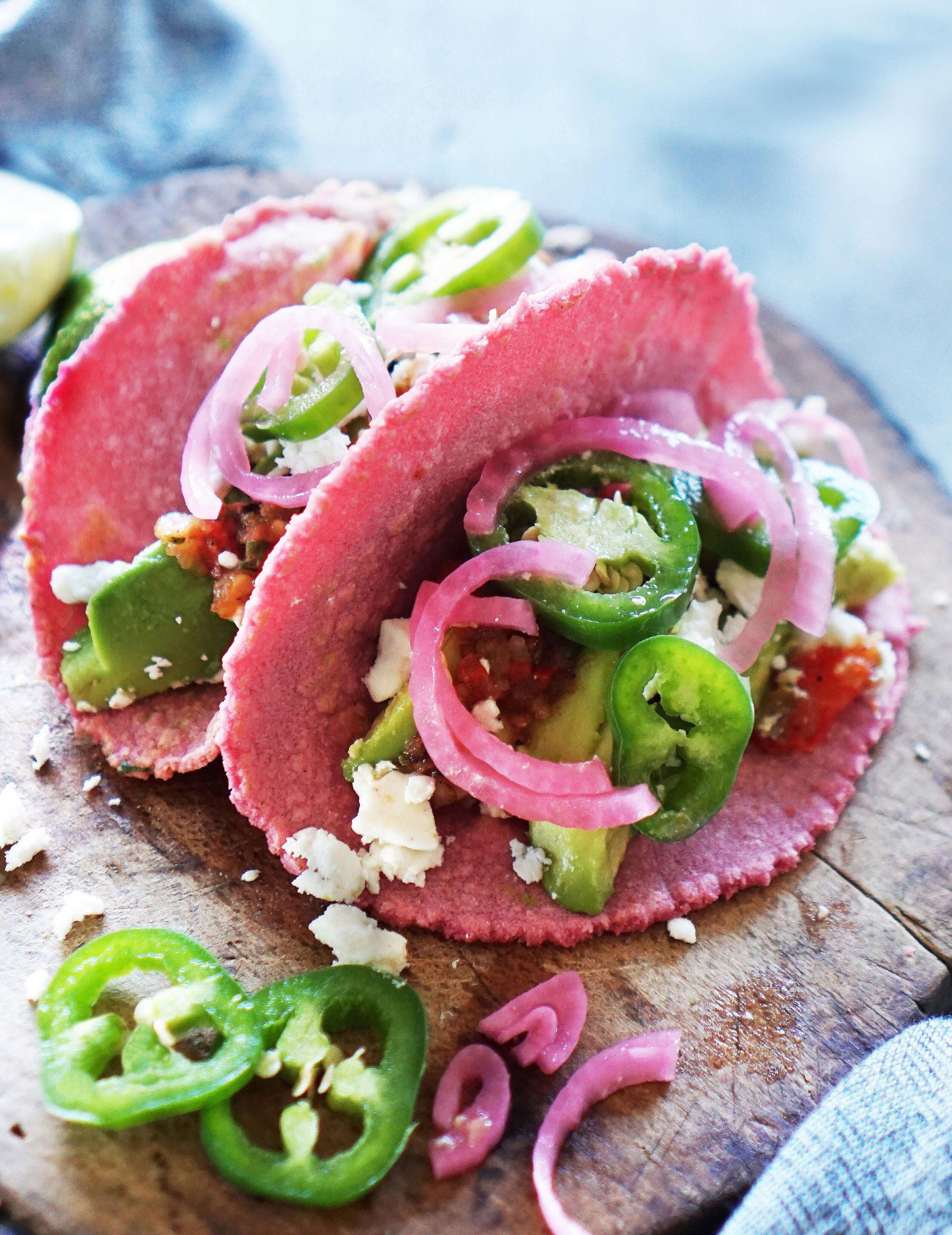

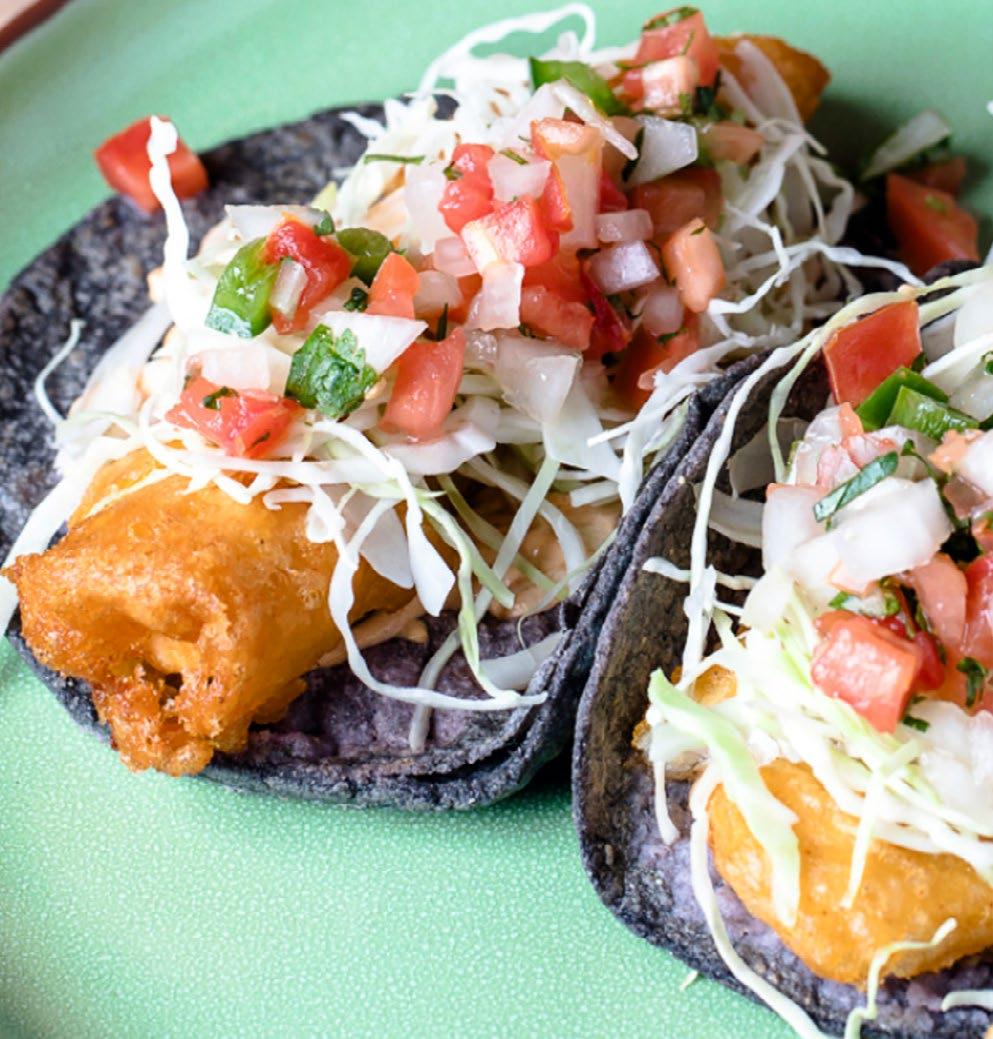

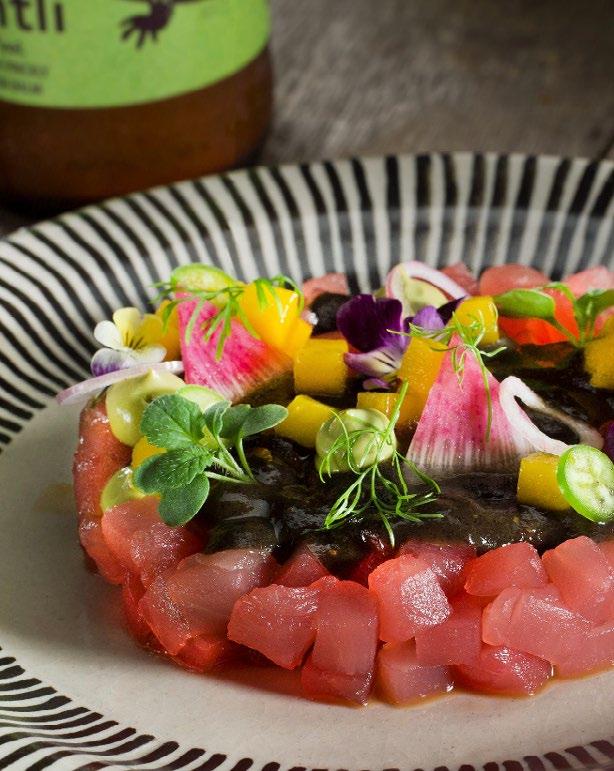
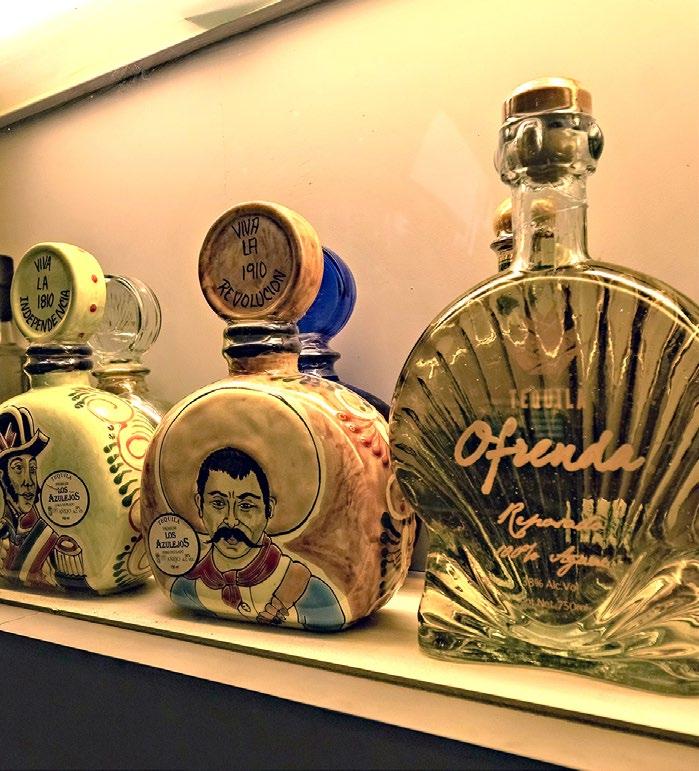























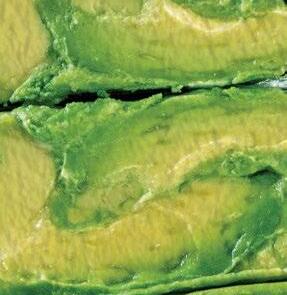
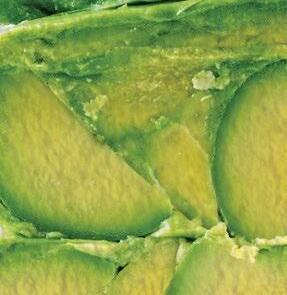



Our avocado is just like the fruit you cut, pit and scoop minus all the cutting, pitting and scooping. And that translates to some serious time and labor savings. If you want the best part of the avocado without any of the work, give WHOLLY® AVOCADO a try. It’s 100% Hass Avocado and always ready to go.




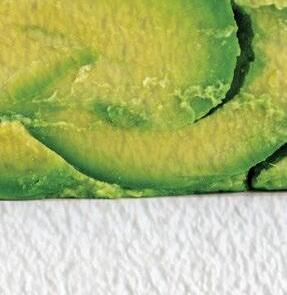



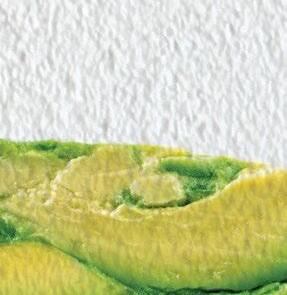





















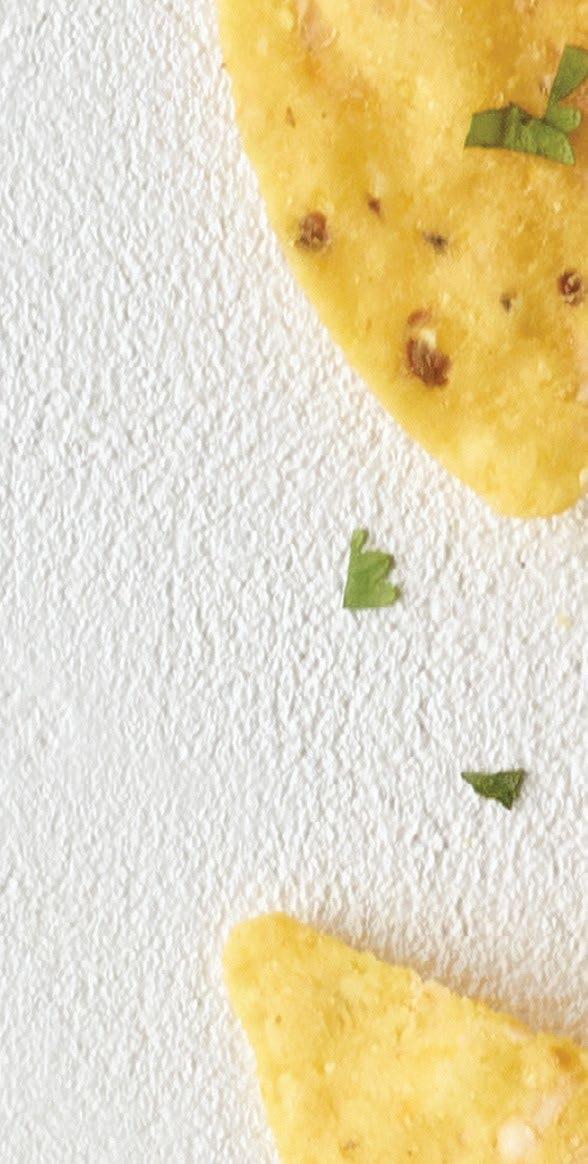









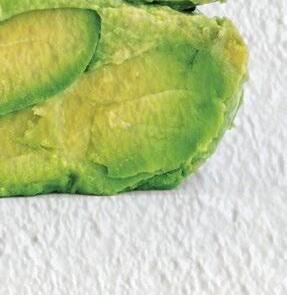
TRY IT YOURSELF. REQUEST A SAMPLE. SCAN THE CODE TO GET STARTED.












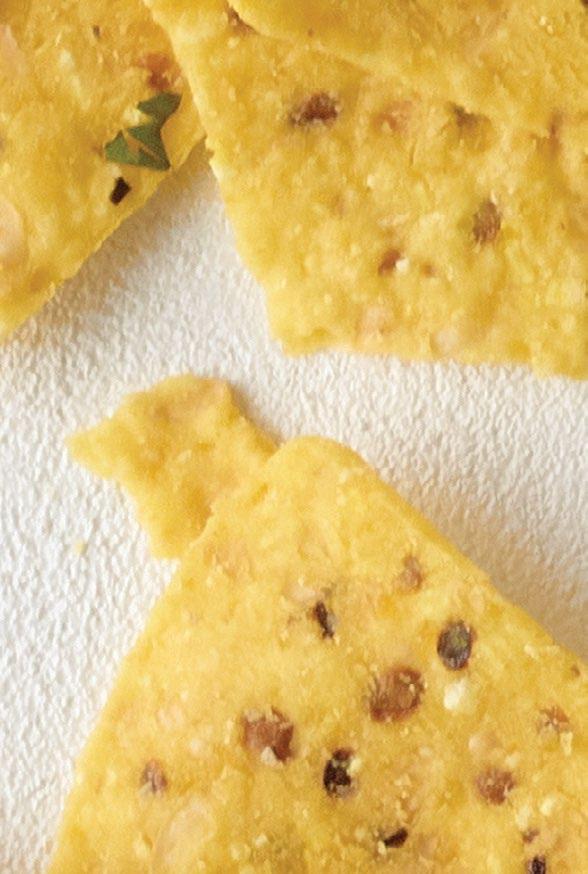

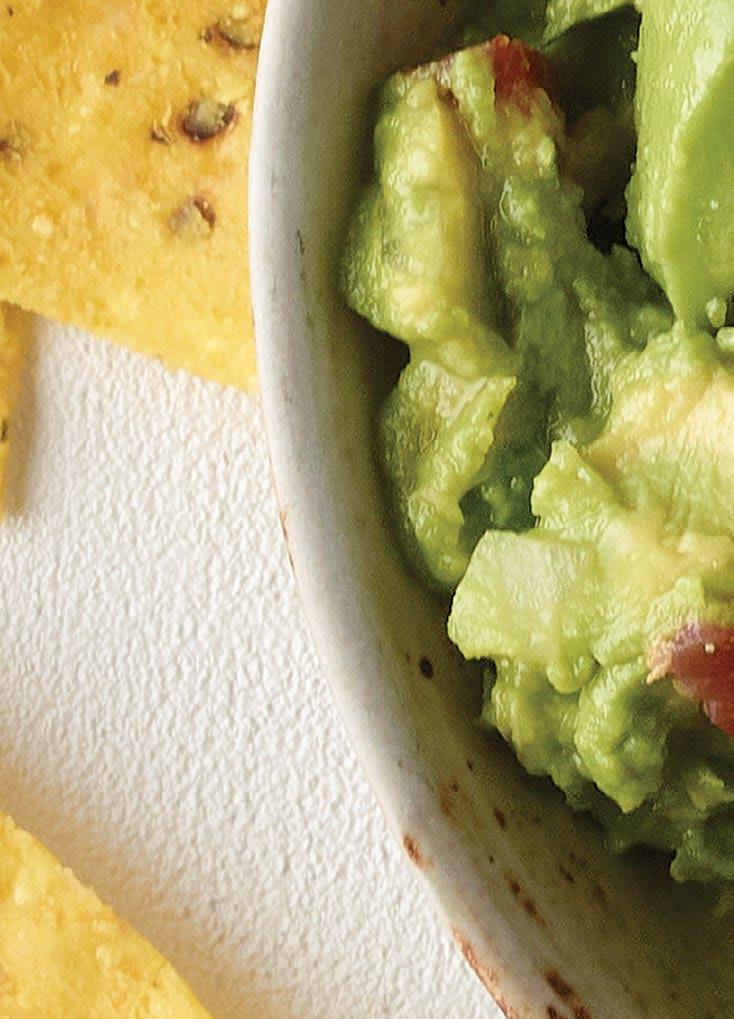
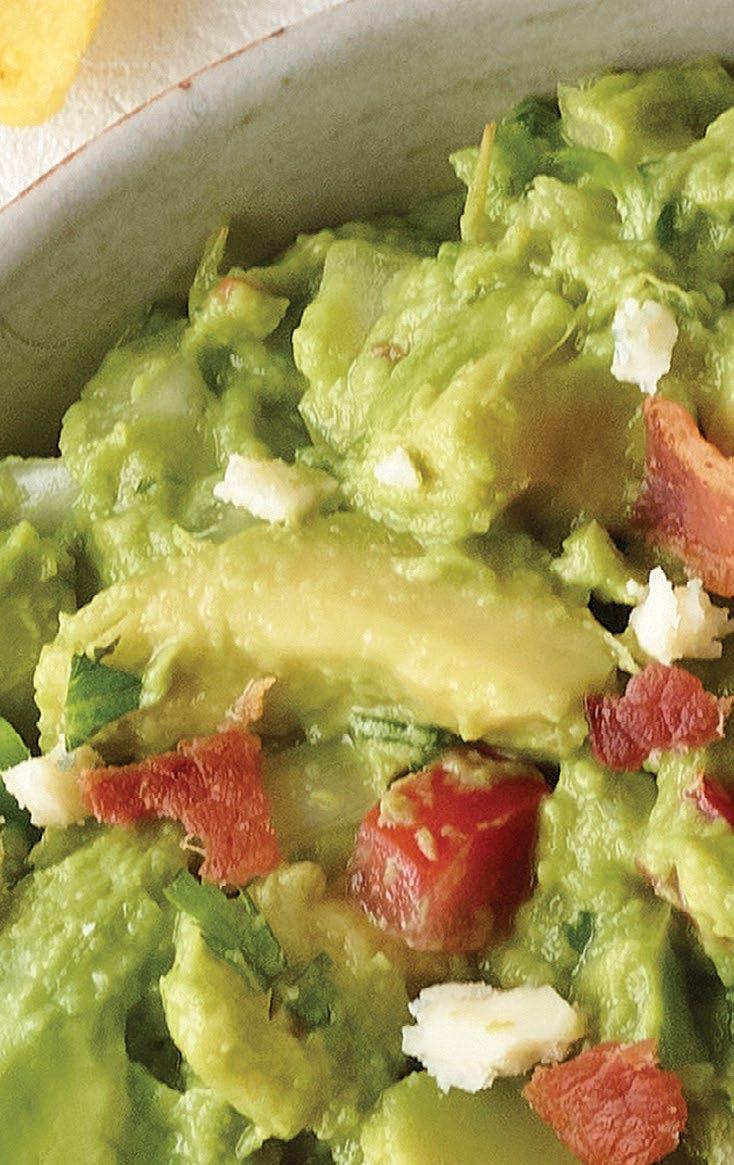
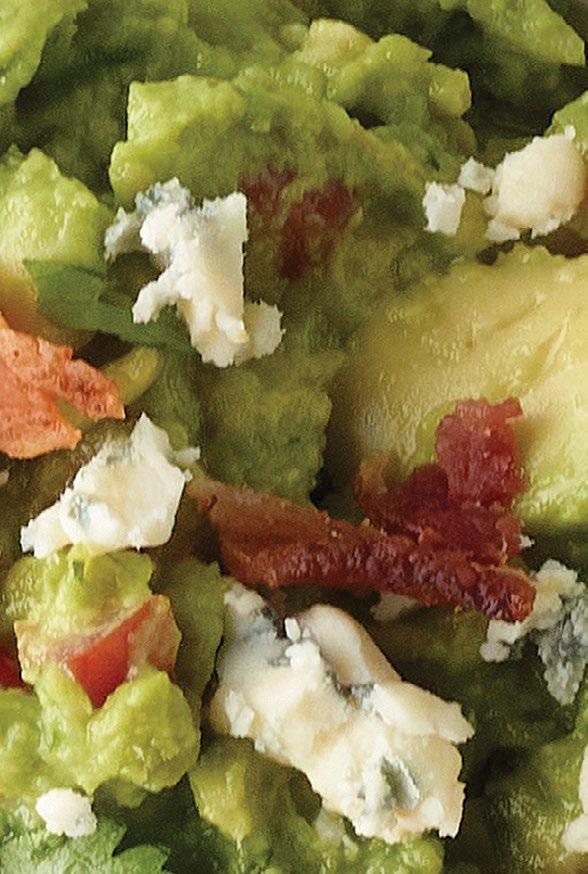
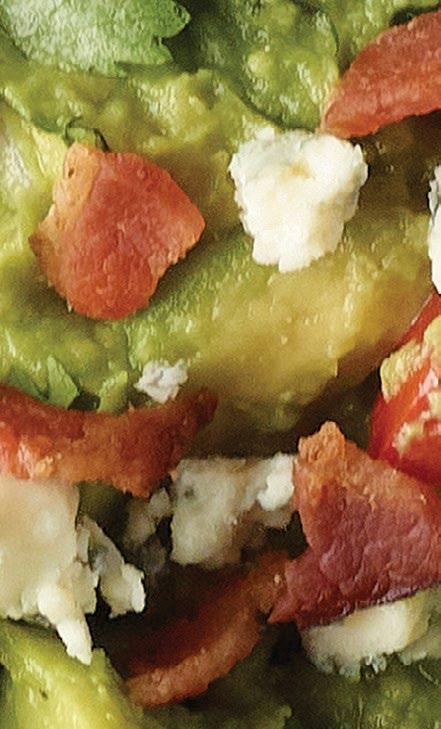






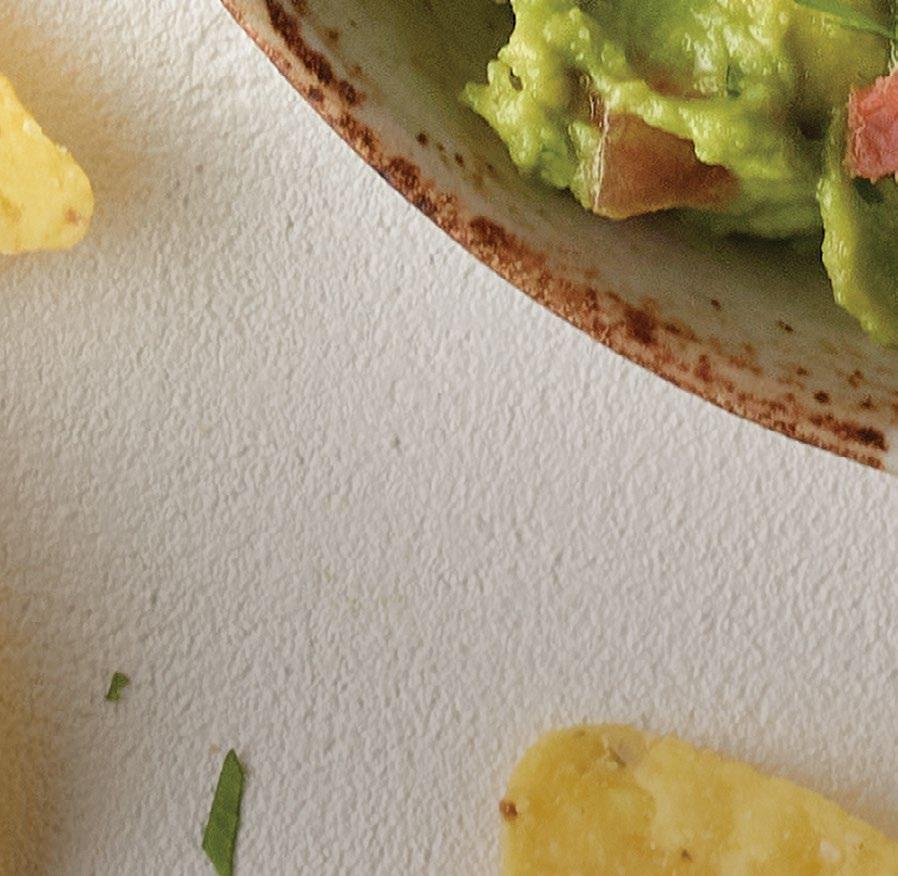











Kathleen Furore, editor


“The year is half ov .”
Now, that seems like an obvious declaration — but quite honestly, I was a bit shocked when I heard it uttered out loud at the beginning of July.
For all of us here at el Restaurante, this particular half-year mark is a milestone, of sorts. It hits just as we’re putting the fourth issue of the year to bed — a year we entered feeling quite unsure about how our transition to an all-digital format would go.
We’re happy to report that that uncertainty has become confidence thanks to our readers and advertisers who have enthusiastically responded to the changes the year ushered in. As one reader who asked recently how to get a copy of el Restaurante responded when I emailed the link to subscribe and told her it was now a digital-only publication: “Even better!”
We feel as if we’re hitting our stride, offering multiple ways to find information for Mexican/Latin restaurants that isn’t available elsewhere in such a concise, curated format designed specifically for this growing foodservice segment.
Besides the flipbook and web-optimized English and Spanish issues of el Restaurante, there’s our website that includes Industry News updated daily, recipes, a Buyer’s Guide section, and more; Facebook and Instagram pages; a Recipe of the Week email; and eMex, our biweekly enewsletter full of up-to-date information from the Mexican/Latin culinary scene; plus exclusive webinars that are posted online so those unable to attend can benefit from all of the information speakers delivered.
We hope that this issue — #4 of the 6 planned for 2024 — delivers information that will help you plan menus and promotions that will carry you successfully through the second half of the year.
Let us know how we’re doing and how we can improve to provide even more value!
PUBLISHER Ed Avis
EDITOR Kathleen Furore
ART DIRECTOR Ala Ennes
CONTRIBUTING WRITER Elyse Glickman
MAIN OFFICE phone: 708.267.0023
PRESS RELEASES TO: kfurore@restmex.com
MAILING ADDRESS P.O. Box 13347 Chicago, IL 60613
SHIPPING ADDRESS 1317 W. Belden Ave. Chicago, IL 60614
AD SALES/ENGLISH Ed Avis 708.218.7755 e davis@elrestaurante.com
Suzanne Bernhardt 678.880.9282 suzanne@elrestaurante.com
AD SALES/ESPAÑOL Alfredo Espinola 52-55-4006-9540 alfredo@elrestaurante.com
Published by Maiden Name Press, LLC Volume 27, Number 4
el Restaurante (formerly el Restaurante Mexicano) (ISSN 1091-5885) is published six times a year by Maiden Name Press, LLC 1317 W. Belden Ave., Chicago, IL 60614 el Restaurante is distributed by subscription at the cost of $40. All contents copyright© 2024 Maiden Name Press, LLC. Nothing in this issue may be reproduced in any form without publisher’s consent.

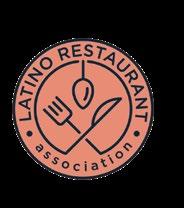



Key details are falling into place for the second annual Antojo Industry Expo set for October 13-14 at the Long Beach Convention Center in Long Beach, California. Highlights will include a keynote speech by celebrity chef and entrepreneur Jenny Martinez, a Latino Food & Beverage Summit, and 150+ exhibitors who will showcase products and services (see list at right).
On October 13, Martinez’s keynote address will launch the Expo at the “Bienvenidos Cafe con Pan Dulce” during a welcome party in “El Lobby” outside the exhibit hall. Martinez became a social media sensation by posting images of her Mexican family’s recipes and now has 3.5 million TikTok followers and 250,000 YouTube subscribers. Her entrepreneurial endeavors include a line of cookware, MesaMia, a line of spice mixes, and the bestselling cookbook, My Mexican Mesa, Y Listo!: Beautiful Flavors, Family Style
The Antojisimo Fiesta, a networking and socializing event, is scheduled for that evening outside the exhibit hall.
On October 14, the 10th Annual Latino Food & Beverage Summit in “El Lobby” will bring together industry leaders, influencers, entrepreneurs, and passionate professionals for a day of insightful discussions, networking, and a glimpse into the future of Latino food and beverage.
For more information or to register, visit antojoindustry.com.
Megamex
Herdez
Wholly Guacamole
Embasa
Dona Maria
La Victoria
CMC Sales & Marketing
El Yucateco Habanero
Don Victor Honey
La Sirena Sardines
Super Lucky Jasmine Rice
Mega Chamoy
La Botanera Salsa
Val Vita Tomato Sauce
Pagasa Pasta and Cookies
Old Hacienda
El Rosal Flour
Pan Harina Arepas
805 Cerveza
Cremimex
Cal State Foods
Latino Restaurant Assoc.
Senic International
Tequila Papacito
Tequila 916
Beanhut
Nelia’s La Birria
V&V Supremo
Urban Farmhouse
Toro Tents
Same For Your Corp.
Sauco Salsas
Dirty Cat Mix
Lunchitas
Cool-A-Zone
Fiesta Mexicana
Gaya Imports
Kijun, Inc.
La Purepecha
Manufacturas Lenin
IQ Risk
Bback 4 More
Kuko’s Adobo Marinade
Munch Citi
ODS Link
Premier Labeling
Ya Oaxaca
Tagrisk Insurance
Vibras Foods
Latino Food Industry Assoc.
TUYYO Foods
Lolita’s Guiltless Margaritas
AltImpact Coffee
Badia Spices
Pepe’s Foods
Styles by Jean
el Restaurante Magazine
Gonzalez Merchandise
Import & Export
New Economics for Women
Nongshim USA
VNVN System
1515 Design
Doregrill
Cordialsa USA
Mexico Lindo
Zuko
Cielo Ramen
Jinro US
Ideal Cooking Products/Ekono
American Scale
Besitos
Los Pericos Tostadas
Bravo Foods
Empire International Food Corp.
Indomie
Gustinos
Johnnie Chingas Cook Seasoning
La Tapatia Tortilleria, Inc.
Ortega’s Meat Distribution
RED Produce
Sabor Victoria
Watson Distributing
Mesa Mia
Tapatio Hot Sauce
ToDo Robotics
Zumex
Aqua 9+ Beverage Co.
Citrus America
Torrico Alimentos
Gus Mejia Arte
Cocijo Mezcal
National Cooperative Bank
Buzzballz
360 Booth Expert, LLC.
Mela Water
EZ Bombs
DeSilva Spices
Crystal Geyser
Tio Pelon Salsita, Inc.
Rainbow Foods
Hacienda Agua Blanca
Friendly Fruits
La Jolla Tortilleria
Huitlacoche Bodega
Panble
4 Brothers Chiles and Spices
Nathan Kimmel Company
El Alce
Marukan Vinegar USA Inc.
SoCal Gas
Tortiflavor Cal.
Jovy Candy
Dynamic Coatings
Uniq Marketing and Branding
Cheech & Chong’s High & Dry
Jones Soda
Action
Duct Cleaning Company
Cantadrink
Chefs’ Toys
Avoolio
Kittrich Canopy
Tajin
Nex-Sip!
Roots By Ramsan
Superior Food Machinery
Vidagua
San Diablo Artesian Churros
Rancho Foods
Salsa Huichol
X-IGENT Printing
JRS Imports and Trade
Amoretti
Two Nutty Brothers
Ramos Tortimex
Cactus Crunch Chips
Vidagua
Harvest Meat Distributors
Seis Soles Wine Co.
Brothers Carts MFG
Del Molcajete Salsa
OCM Globe Inc.
Liquid Death
SpotOn by Cloud POS Solution
Freshly Squeezed
The Box Company MX
Aguas Locas
Frylow
Xiamen Kenjo Foods Co. Ltd.
Purse Pegs LLC
Valley Fruit and Produce/ Continental Export
Dona Elisa’s Adobo y Salsas
Cielo Foods, Inc.
SKY LED Media
Rasec Solutions/ El Aguila Foods
Sarah Gonzalez Agency
EDT USA
Flex CBD
Aguave Lechuguillia
Skechers
Heineken
De La Calle Tepache
Kas-Botanas Mexico, Inc.
Salvadidas
Especias Aries
Autec Sushi Robots
TelevisaUnivision
RationAle Brewing Co.
Fresh & Natural California















THERE ARE SITUATIONS EVERY RESTAURANT HOPES IT NEVER ENCOUNTERS — fire and natural disaster among them. But there are, of course, no guarantees, as two recent examples show.
On May 8, Jose’s Mexican Grill and Cantina in Hot Springs, Arkansas, sustained significant damage — water leakage, destroyed AC units, vent hoods and more — when an EF-2 tornado hit the town.
And on Friday, June 21, La Finca Mexican Restaurant in Morehead, Kentucky, was damaged by fire, forcing the business to close for at least several weeks — and just as the owners were planning a remodel.
With catastrophic weather events escalating nationwide and fires always a risk, the National Restaurant Association has produced an “Always Ready” series of free guides that offer restaurants information on planning for and reacting to a calamitous event.
Always Ready: Natural Disasters gleans the best practices from official sources and restaurant operators — including human resources and risk managers from independent restaurants and national brands — to share recommenda-
tions for what to do in advance, during and after earthquakes, floods, hurricanes and tornadoes, wildfires and severe winter storms. It includes resources to help operators develop crisis management teams, insurance coverage, emergency contact lists and supplies, communication protocols, disaster response plans for each storm type, and next steps for recovery.
“Government agencies from FEMA to the CDC and Ready.gov offer myriad resources for preparedness and recovery … but none is geared specifically to restaurant operations,” the NRA notes.
Always Ready: Fire pulls best practices from official sources and restaurant operators —including human resources and risk managers from independent restaurants and national brands — to share recommendations for what to do in advance of, during and after a fire in your restaurant. The guide covers topics including vetting insurance coverage, assembling a crisis management team, assessing your restaurant’s risk for fire, taking fire prevention measures, creating an “In Case of Fire” action plan that includes practice drills, creating a contact list to address after-fire recovery, and communicating with staff and customers. As information from the NRA says, “Pre-planning and a good blueprint for what to do if a fire breaks out can have a big impact on the safety of your employees and guests and the ability of your business to recover quickly.”
Storm-specific Mini Guides — quick reminders of what to do in advance, during and just after a storm — also are available to share with team members.
You can download the guides here.

sponsored by Sammic


Get out your salsa-making ingredients and create a unique foodservice salsa recipe you think has the consistency and flavor to wow the judges. The grand prize winner will receive a Sammic XM-52 Immersion Blender and $750. Second and third place will receive $500 and $250, respectively. Plus the top three recipes will be featured in the NovDec issue of el Restaurante.
All readers of el Restaurante are welcome to enter the contest. The recipe must be an original recipe of your own creation. There are no restrictions on the ingredients of the recipe. All recipes will be judged on taste, creativity and appropriateness for foodservice applications.









THE 2024 DATASSENTIAL 500 REPORT, which examines the 500 largest multi-unit restaurants in the United States, revealed that those restaurants had sales of $417 billion in 2023 (an increase of 7.5 percent over 2022), and a total of 238,152 units (up about 2 percent). Mexican restaurant chains had an excellent showing in the report, appearing among the leaders in 9 of 13 categories.
The Mexican chain heavy hitters, Taco Bell and Chipotle, scored neared the top of the big categories: Taco Bell ranked 5th in overall units with 7,405 units and 4th in overall sales, at nearly $14 billion. Chipotle ranked 8th in overall sales, at nearly $10 billion.
In another big-picture category, Mexican limited-service restaurants (LSRs) overall ranked as the 5th fastest growing segment, at 3 percent growth. That was a slightly faster growth rate than chicken restaurants and nearly double the growth of pizza restaurants. Only salad, coffee and dessert chains grew at a faster clip. In terms of revenue growth, chicken outpaced Mexican by about 3 percentage points.
In the operating segment breakdown, Taco Bell was the 4th largest quick service chain by unit, and Chipotle was the 2nd largest in the fast casual segment. In
the Casual & Fine Dining Segment, Plaza Azteca was the 7th fastest growing chain, followed immediately by El Torito Cantina Autentica at 8th and Torchy’s Tacos at 9th. Brazilian beef chain Fogo de Chao rounded out that category in the 10th position.
In a near shut-out, Mexican multi-unit restaurants did not do particularly well in the Consumer Perception rankings. No Mexican chain ranked among the top five in Food Quality, Service, Experience or “Net Promoter,” which is the answer to this question: “How likely would you be to recommend this chain to friends & family?”
The only Consumer Perception rankings Mexican restaurants placed in were the Affordability and Value for the Dollar categories. Pollo Tropical ranked 5th in the Affordability ranking; Del Taco ranked 5th in the Value for the Dollar ranking; and Café Rio ranked 2nd in Largest Gains in Value for the Dollar.
These rankings show that while Mexican multi-units are doing well overall, they could definitely improve in terms of what customers think about them. Affordability is important, of course, but quality Mexican multi-unit restaurants offer much more than value. Hopefully the 2025 report will include Mexican restaurants among the winners in all categories.

A Sammic immersion blender makes your salsa preparation easier than ever! A powerful motor, easy-to-use controls and ergonomic design mean your staff can create amazing salsas, soups and other blended menu items with ease and speed. You will love the labor savings and your customers will love the results!

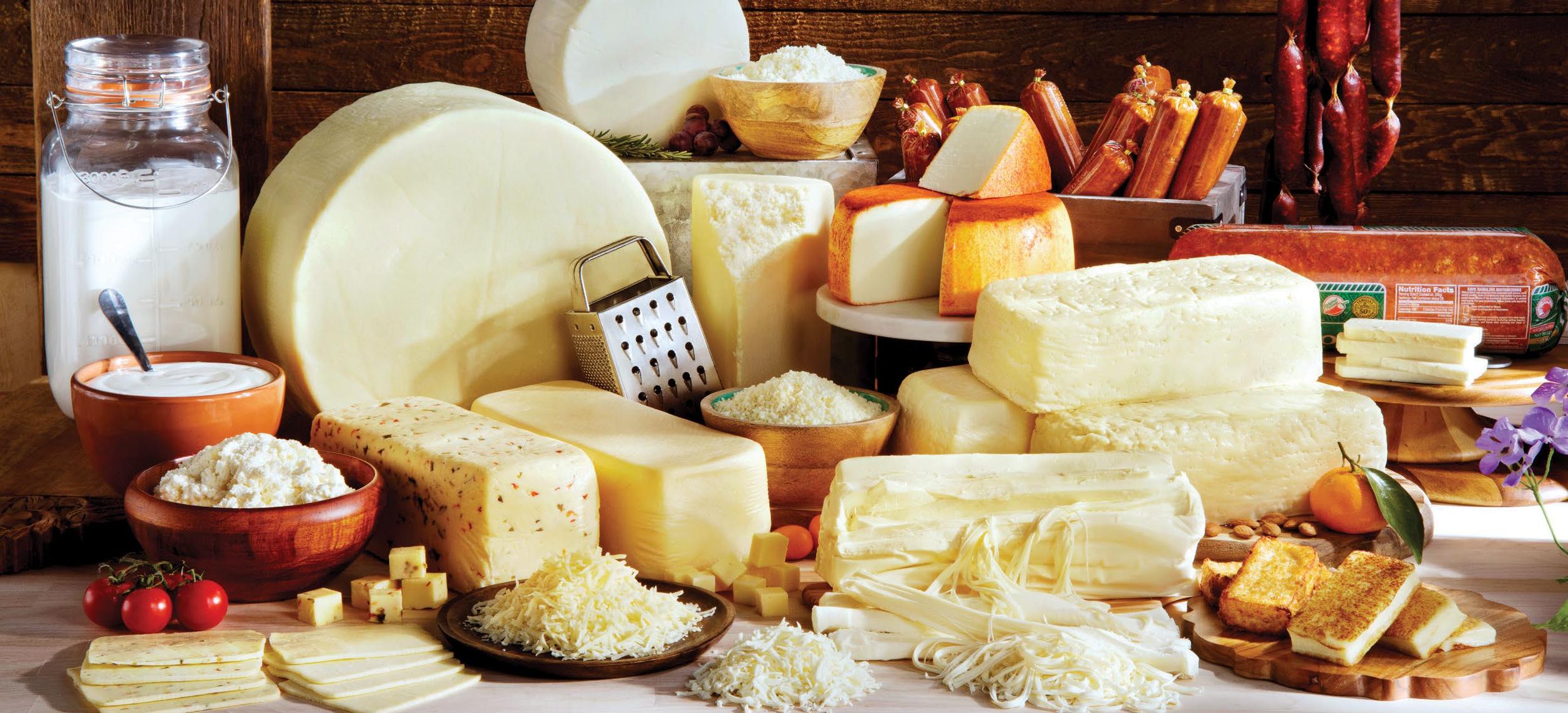

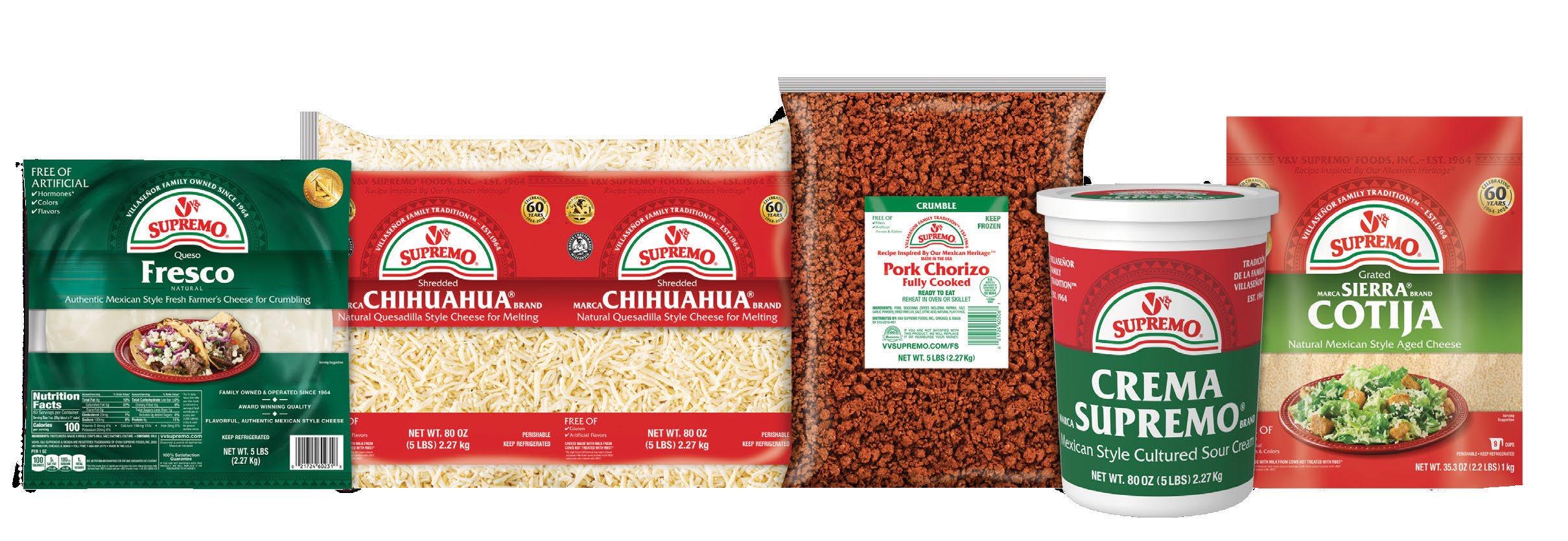

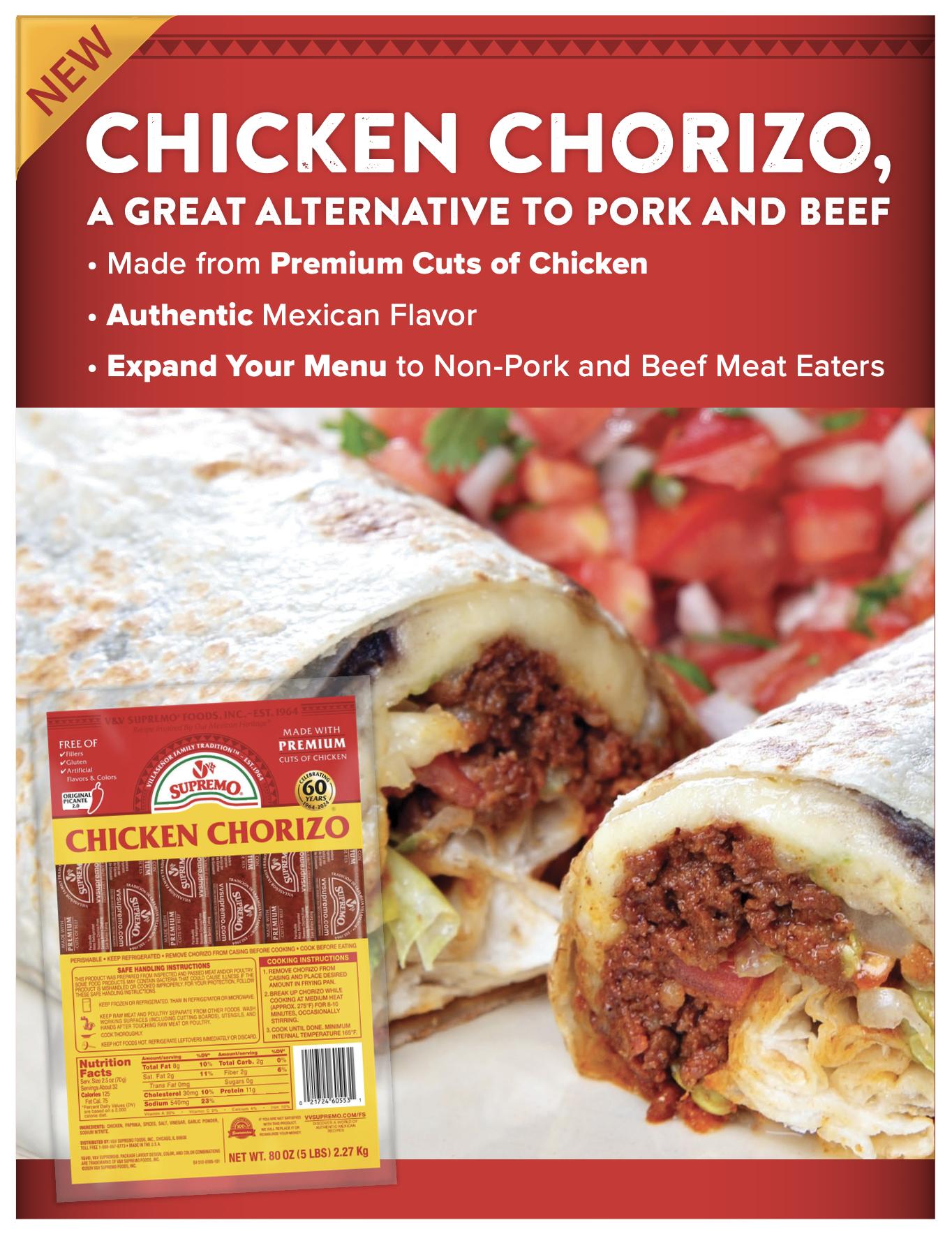
EDITOR’S NOTE: The hardest working people in your restaurant are probably the managers, and el Restaurante’s Manager of the Year program has honored hundreds of the best managers of Mexican/ Latin restaurants since it started in 2016. We thought it would be interesting to see how some of the early winners are doing. This is what we learned!

John Mayes, El Toro Mexico Restaurant’s vice president of operations and pastor, said Mary Buxton treats her employees extremely well when he nominated her for Manager of the Year in 2020: “She has a very motherly and caring love for her staff in the FOH and BOH and carries a huge amount of respect and admiration,” Mayes wrote.
That description of her remains true today.
“I pride myself on being the leader of my restaurant while also being the easiest person to talk to,” says Buxton, who is still the general manager of the Palestine location of El Toro, which has six locations, all in Texas. “My employees not only look to me for guidance at work, but in other areas of life as well. From helping with info for a first-time car buyer, parenting questions, how to file taxes, and so much more. I want to be a positive light for my team, and I hope that my influences help them now and later on down the road.”
Buxton made her mark at El Toro during COVID, when she deftly managed the staff through the crisis and expanded her location’s to-go and delivery operations. As evidence of her people skills, Buxton’s management team from the COVID era is still entirely intact.
“After COVID, so much changed for restaurants in almost every area of operations,” she says. “It’s great to work for a company that listens to the front line, rolls up their sleeves, and works with us to make El Toro a success in this industry!”
It sounds like Buxton will be helping El Toro succeed for many years to come: “I plan to stay with this awesome company for a very long time. I’m very happy with my position, and don’t have any plans to change it up.”
(continued on page 17)

Diners are craving premium, authentic ingredients — healthier, filled with flavor, and sustainably sourced. Performance Foodservice has the branded seafood products to help you reel them in. From Empire’s Treasure® Mahi Mahi to highestquality Bay Winds® Shrimp, we’ve got innovative seafood solutions and Contigo® hispanic products to transform your menu into a culinary catch.


JESENIA RIVERA, 2021 WINNER:

When we interviewed Jesenia Rivera in 2021 after she was named Manager of the Year, we asked her what her future plans were. She said, “Since I have all this experience, it would be nice to open my own little spot. I would like to take everything I’ve learned and apply it to a small business I could call my own.”
Well, that dream may not be too far in the future. Rivera, who has worked full-time in her family’s restaurant, Los Magueyes, for about 10 years, currently co-manages Rancho Los Magueyes, the second location of the restaurant in Upland, California.
“I work alongside my brother, Gustavo, and we both run the restaurant in different capacities,” she explains. “He focuses on running the restaurant itself, dealing with employees and vendors, bartenders, everyday sort of things. I work as a server but am responsible as well for paperwork, payroll, bills, renewing city/county permits, licenses, etc. We are planning on buying the restaurant from our father, possibly next year. Of course, since he’s our father, hopefully the sale price won’t be too bad! Lol”
In anticipation of becoming an owner, Rivera, who has a bachelor’s degree in psychology from the University of California-Riverside, has been researching business loans and the process of transferring ownership. She also has been taking classes at the Small Business Development Center at Cal State Fullerton.
“They provide free workshops for small business owners,” she says. “I recently finished a seminar on negotiating leases, and it was a huge learning experience. Honestly, I felt a little lost, so I need to take more classes to really start grasping information.”
Since her brother is co-managing the restaurant, and they have a larger staff than in 2021, Rivera has been able to enjoy a fuller personal life, she reports.
“Since I have taken more of a behind-the-scenes position, I have way more free time to vacation. I have taken a few trips to Vegas, Santa Barbara, Orlando and recently went on a cruise,” she says. “So, I’m trying to enjoy life and have fun with my partner of seven years. Also doesn’t hurt that he’s a travel agent, so we are taking advantage of all the perks!”



| BY KATHLEEN FURORE |
When your customers think about tortillas, traditional flour and yellow and white corn varieties are what likely come to mind. Those are, after all, the options they’re almost always given when ordering tacos, fajitas, and other tortilla-based dishes at most Mexican restaurants they patronize.
But more and more restaurants are putting a colorful spin on tortillas, turning to ingredients like purees and masa made from heirloom corn to craft tortillas that are pressed in-house and sometimes packaged and sold for at-home consumption, too. The process they’re employing is about more than the hue; it’s about incorporating sustainability and culinary history in the art of tortilla-making.

At Verde in Lihue, Hawaii on the island of Kauai, diners find a rainbow of tortillas at any given time throughout the year. The restaurant is so proud of and eager to promote the lineup that its Facebook cover features a picture of five tortillas and invites visitors to “Follow the Rainbow.”
It’s all part of Verde’s mission “to celebrate the essence of local food and a vibrant community valuing the support of local farmers and businesses” — something it does by turning to the land to create the unique tortillas that color its menu, according to owner Maria Scarbo.
“We currently have flour, ‘ulu (Hawaiian breadfruit), sweet purple potato haupia, furikake, Kalo (taro),” Scarbo says, noting that the ‘ulu and Kalo — both made
(continued on page 22)
“The crops do tend to give us a tougher dough, but for us, that’s a minor price to pay if we are pushing sustainable, locally grown crops in our tortillas.”
MARIA SCARBO,
Verde














OUR MOLE IS A LABOR OF LOVE.
WE DO ALL THE LABOR. YOU GET ALL THE LOVE.
When it comes to mole, time is your most important ingredient. But who has the hours and hours it takes to get it right? We do. And we take the time to make it the right way so you can share it the easy way. DOÑA MARIA® Mole Rojo promises the truly authentic flavors of a generations-old family recipe in just a matter of minutes.


ASK FOR A TASTE
RICH FLAVOR


from locally grown, sustainable crops — vie for the title of “most popular” with Verde’s customers. Seasonal flavors round out the ever-changing rainbow: Kabocha Squash Tortillas join the lineup in October and November, Beet Ginger Tortillas in December. All are made from scratch on site, and packs can be purchased in the restaurant and online.
While all of the tortillas are flour-based, using fresh purees made from local crops imparts a slightly different texture than what a ‘normal’ tortilla has.
“The crops do tend to give us a tougher dough, but for us, that’s a minor price to pay if we are pushing sustainable, locally grown crops in our tortillas,” Scarbo says.
When it comes to choosing which tortillas to use in which dishes, Scarbo says the base flavor profile is the determining factor.
“For example, we use furikake tortillas on our Furikake Mahimahi Tacos. We use our seasonal Kabocha Squash tortillas on our Ground Turkey Taco specials and Beet Ginger Tortillas on our Holiday Steak Tacos, “ she says. “We make sure they all work together flavor-wise — which they do!”
Customers can opt to “upgrade” from basic flour to one of the flavored tortillas on any taco for an up-charge, she adds. Creating tortillas that keep customers happy, of course, is key. But the goal, says Scarbo, is so much more.
“We’d like Verde to be another platform to showcase what we can grow locally and sustainably here in Hawaii,” she concludes. “Tortillas are the perfect canvas to get creative with what Hawaii can offer — which makes it fun!”
At Chicheria Mexican Kitchen, the Baja-inspired Mexican r estaurant that debuted in Atlanta’s The Works complex last


September, customers don’t have to worry about the kind of tortilla to order. That’s because every tortilla starts as organic, non-GMO blue corn masa, which the restaurant’s skilled tortilleras press by hand daily. Flour tortillas are an option — but one typically reserved for the kids’ menu.
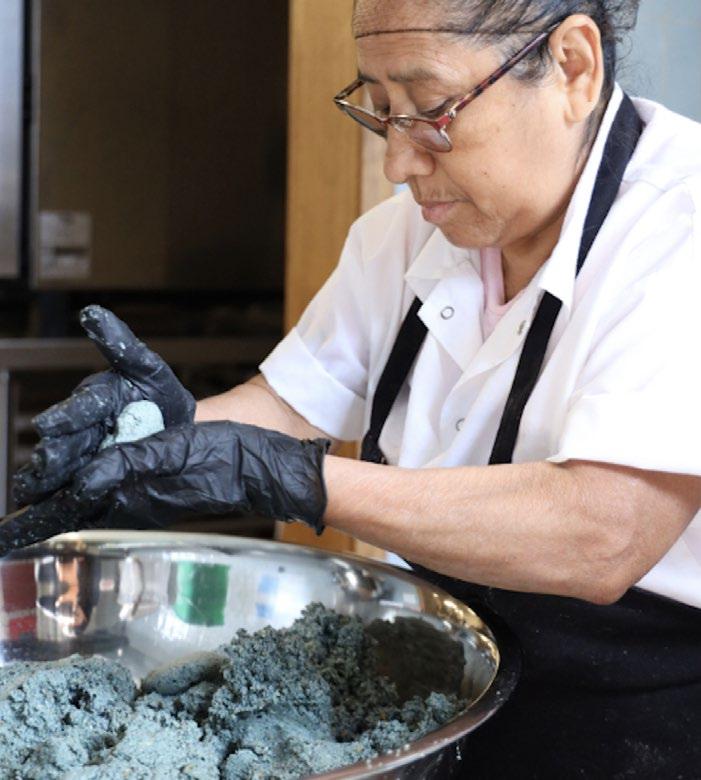
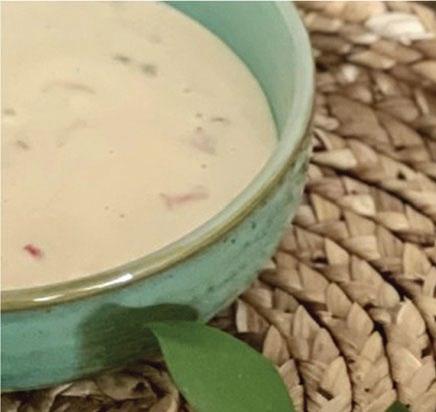

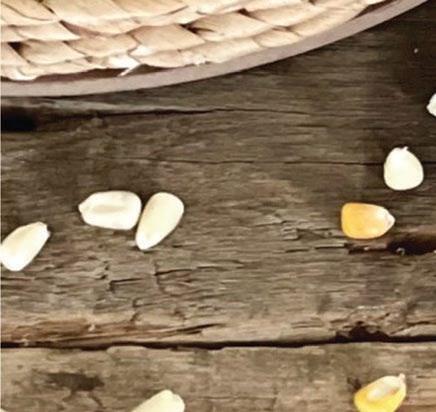
“We always try to steer customers toward the blue corn tortillas — they work with any dish,” says Chef Alejandro Tamez, who notes that it is the waitstaff ’s role to explain just what those blue corn tortillas are all about. “As soon as our guests sit down, the servers talk about what makes the tortillas special.”
Chicheria embraces a masa-to-table approach to tortilla-making by using





house-made masa and offering guests the chance to see the process in real-time through a viewing window.
Blue corn — a staple in Mexican cuisine that traces its roots back to the ancient civilizations of Mesoamerica and was revered by the Aztecs and Maya for its nutritional properties and deep flavor profile — is the star of the process, and the single ingredient that makes the tortillas so special. Not only does it produce tortillas known for their distinctive color and rich taste, it also delivers better nutritional value







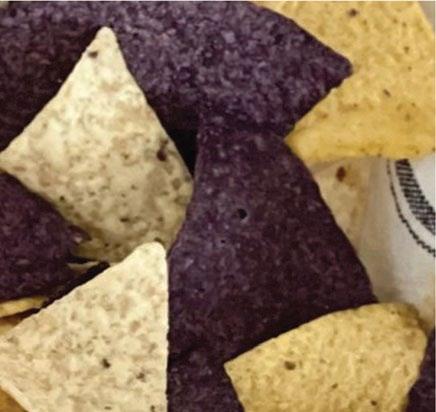
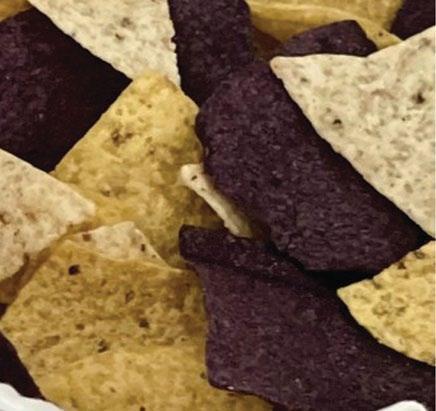


than yellow and white corn, the restaurant’s website explains.
“Blue corn tortillas boast a higher protein content and lower glycemic index, and they’re a rich source of anthocyanins — a type of flavonoid with antioxidant effects. They boast a higher protein content and lower glycemic index, and they’re a rich source of anthocyanins—a type of flavonoid with antioxidant effects,” the website says.

“This nutritional advantage aligns with Chicheria’s commitment to offer dishes that are as wholesome as they are flavorful,” the website says.
“At Chicheria, we embrace this age-old tradition, offering a taste of history with every bite.”
Kathleen Furore is the editor of el Restaurante.
• BE&SCO. Presses, press & grill combos, press & oven combos, grills, conveyors, and dough prep equipment
• Dutchess Bakers Machinery Company. Tortilla presses, dough dividers & rounders, and a complete Tortilla Pro Package
• Tortilla Masters. Tabletop corn tortilla machines plus new corn grinder
• Bridgford. Tortilla dough — just thaw, press & grill
• Clarkson Grain. Non-GMO & organic white, yellow, blue and red corn
• Minsa. Instant, preservative-free white, blue, and yellow corn masa flour
• Rovey Seed Co. Non-GMO & organic white, yellow, blue and red corn



www.tortillamachine.com 281-994-7010 / @tortillamastersequipment


|
BY
KATHLEEN
FURORE | On the June 28, 2022 episode of The Food Network’s Chopped Desperately Seeking Sous Chef, Chef Francisco “Paco” Moran took the stage with three other chefs in the finale that would determine who would win the $10,000 grand prize and a job as a sous chef for one of the show’s judges.
When the votes were tallied, Chef Paco emerged the Chopped Champion — an exciting turn in a culinary career that has taken him from a freelance gig plating food at age 18 to his current position as executive chef at three Los Angeles area restaurants that honor his Latin roots: LA Cha Cha Chá, Mariscos Za Za Zá and Loreto.
Here, Chef Paco shares the story of his culinary journey with el Restaurante readers.
1
How did you get your first job in the restaurant industry?
I was midway through Le Cordon Bleu culinary school in Pasadena when I started working with a third-party agency
that contracted out kitchen staff and cooks like freelancers. I got a gig helping plate for an event at Wolfgang Puck at Sony Studios. One of their dishwashers walked out so they offered me a job doing that. Two weeks in, one of their cooks walked out and that’s how I landed my first job as a cook. Then, right after culinary school, I started working for Patina Restaurant Group and was there for 13 years.
2
How did you end up on Chopped?
I was working at LA Cha Cha Chá at the time. It was about six months into the opening of that restaurant, and it was one of the few restaurants in LA that was open during the pandemic. Al fresco dining was the only way to dine safely, and we were fortunate because most of our seating was outside. We got a lot of media attention during this time, and I think this got the producers’ attention. I got email messages to be on the show that I thought were just spam. They also reached out to me on Instagram and Facebook. I finally looked into it more closely and it seemed like a legit offer.

3
Dessert was the last dish you had to make during the Chopped finale. What recipe did you prepare that led you to your first-place finish ?
Pastry is not my strong suit, but I knew that if I ever made it all the way to the end, there was one dessert recipe I could make — panna cotta. It was one of the first recipes that I learned how to do when I was 18 or 19 years old. I was just like, ‘If I ever get this far, I guess I could make a version of panna cotta with whatever’s in
“Pa ry is not my rong suit — I don’t rea y work with pa ry at a . But I knew that if I ev made it a the way to the end, th e was one d s t recipe I could make — it was panna co a, one of the fir recip that I learned how to do when I was 18 or 19 years old.” CHEF PACO MORAN
the box.’ Lucky for me, it worked out because when you make certain things for such a long time, you memorize measurements. I was like, ‘I don’t even need a scale or the recipe’ — I could do it by heart because I’ve been doing it for over 15 years.
4
You’re now executive chef at three Latin inspired restaurants. Has it always been your goal to focus on what you remember eating growing up in Watts with parents who were from El Salvador?
Most dishes that I cook now are things that I love to eat on a daily basis, or that I wish I could eat on a daily basis. The menus at Mariscos and Loreto are inspired by food that I grew up with and that does kind of bring everything full circle.
When I started in the industry, I learned French cooking because of the culinary school I went to and the restaurants that I worked in. Some of my mentors had a German background. And then when I worked at the flagship restaurant at the Walt Disney Concert Hall, we leaned Asian/Japanese because we were working a lot with All Nippon Airways. Lately, I find myself lately wanting to revisit these cuisines and incorporate them into what I cook now.
5 I read that your methods represent the next generation of executive chefs who are running things differently in the back of house. What are you doing differently from what traditionally has been done back-of-house?
Times have changed a lot since I was a young cook. I’ve worked alongside chefs who keep





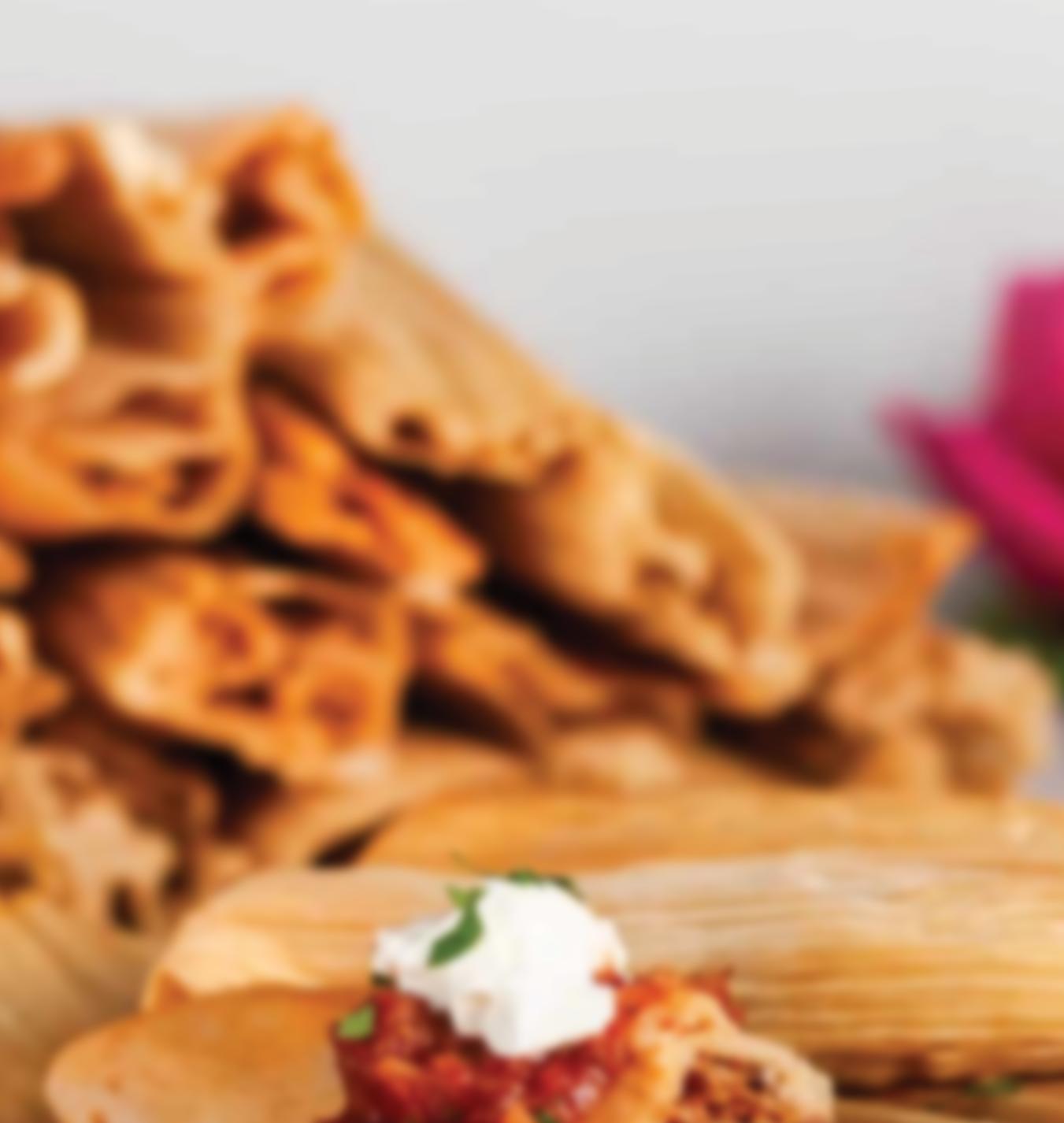

their kitchens super quiet and the chefs really ran everything. The ‘chef does everything’ idea is outdated — that’s not the reality. The chef has a whole team behind them. I’ve leaned more into a collaborative and creative process. Music is an important aspect. We use a streaming system made for business called Soundtrack Your Brand that makes curating and programming playlists super easy. I like for the sous chefs to select the music for prep time because, like I said, it’s all a collaborative process — and it’s not just food at the end of the day, right? It’s also a vibe and the sous chefs should get an opportunity to set the tone for the restaurant.




| BY KATHLEEN FURORE | Ceviche is trending on restaurant menus (42,439 restaurants currently offer it, and social conversations about the dish known as the national dish of Peru have increased by 7.5 percent over the past year, according to Tastewise’s 2024 analysis of ceviche trends). el Restaurante reached out to chefs at three Mexican restaurants to find out about the ceviches (and their cousins, aguachiles) they offer.
CHEF AND OWNER Armando Gonzales, AMERIKAS , Oak Park, Illinois
We currently have one ceviche on the menu, and it is an extremely impressive dish. Amerikas Ceviche is presented over dry ice, garnished with edible flowers and a side of house-made plantain chips, which serve as a perfect vessel for dipping and enjoying. The idea for our ceviche came from experimenting with different flavors and textures, ensuring that every ingredient included complemented each other. We have two types of fish, and many different flavors our guests can experience while enjoying, from sweet pineapple to floral notes of coconut milk. We only have one ceviche currently on our menu, but we do offer an array of delectable vegetarian dishes, so we might look into incorporating a vegetarian ceviche in the future!
My best advice would be to work with a great supplier, one
that you can trust will deliver you the best product possible. At Amerikas, we work with Supreme Lobster and Seafood, a leading regional and national wholesale seafood distributor. Having a partnership with the distributor helps ensure I never have to worry about the quality of seafood we receive, especially being located in the Chicago area.
See Gonzales’ recipe for Amerikas Ceviche on page 47.
CHEF Kevin Templeton, HASTA MAÑANA , San Diego
We have two ceviches that are more on the traditional side of things. Our Traditional Ceviche is made with local caught white fish, typically halibut, while our Shrimp Ceviche features jicama and green papaya mixed in for a unique flavor and texture. We also have a Ceviche de Hongo for anyone looking for


a vegetarian option, with a mix of button, cremini and oyster mushrooms soaked in citrus juices and then served with Salsa Fresca and some crisp shallots for a fun texture and flavor profile. Vegetarian options are becoming both more popular and more widely available for sure, especially in Southern California. We have yearround produce availability, so we are very fortunate to keep up with the demand for vegetarian and vegan options.
To anyone wanting to experiment with ceviches and aguachiles, I highly recommend fresh seafood! There is nothing better. If fresh seafood is not available,
make sure to source great quality frozen shrimp or white fish. I wouldn’t recommend using frozen fish, but shrimp can be utilized well. Always, always, always use fresh citrus juice. Straight from the fruit is best, but if you find a good fresh pressed lemon or lime juice, that can work as well. I highly recommend avoiding lime or lemon concentrate. Ceviches and aguachiles are all about simplicity and that starts with great, fresh product. Try not to over-complicate the dish and just keep it fresh!
See Templeton’s recipe for Traditional Ceviche on page 47.
Kevin Templeton, HASTA MAÑANA , San Diego
Aguachile is in the same realm as ceviche, but the shrimp aren’t entirely cooked in the citrus juices. They are a little more on the rare side, so they have a wonderful texture and clean flavor. The aguachile itself is a wonderful blend of cucumber, serrano chili, lime juice, cumin and coriander all blended up for a delightful liquid the shrimp can soak in. Our aguachile has a lot of traditional flavors and components to the dish, but instead of fresh avocado added, we use an avocado gelato. This gives it a wonderful creamy and sweet element to the dish.
See a recipe for Carrot Aguachile from el Restaurante’s archives on page 47.

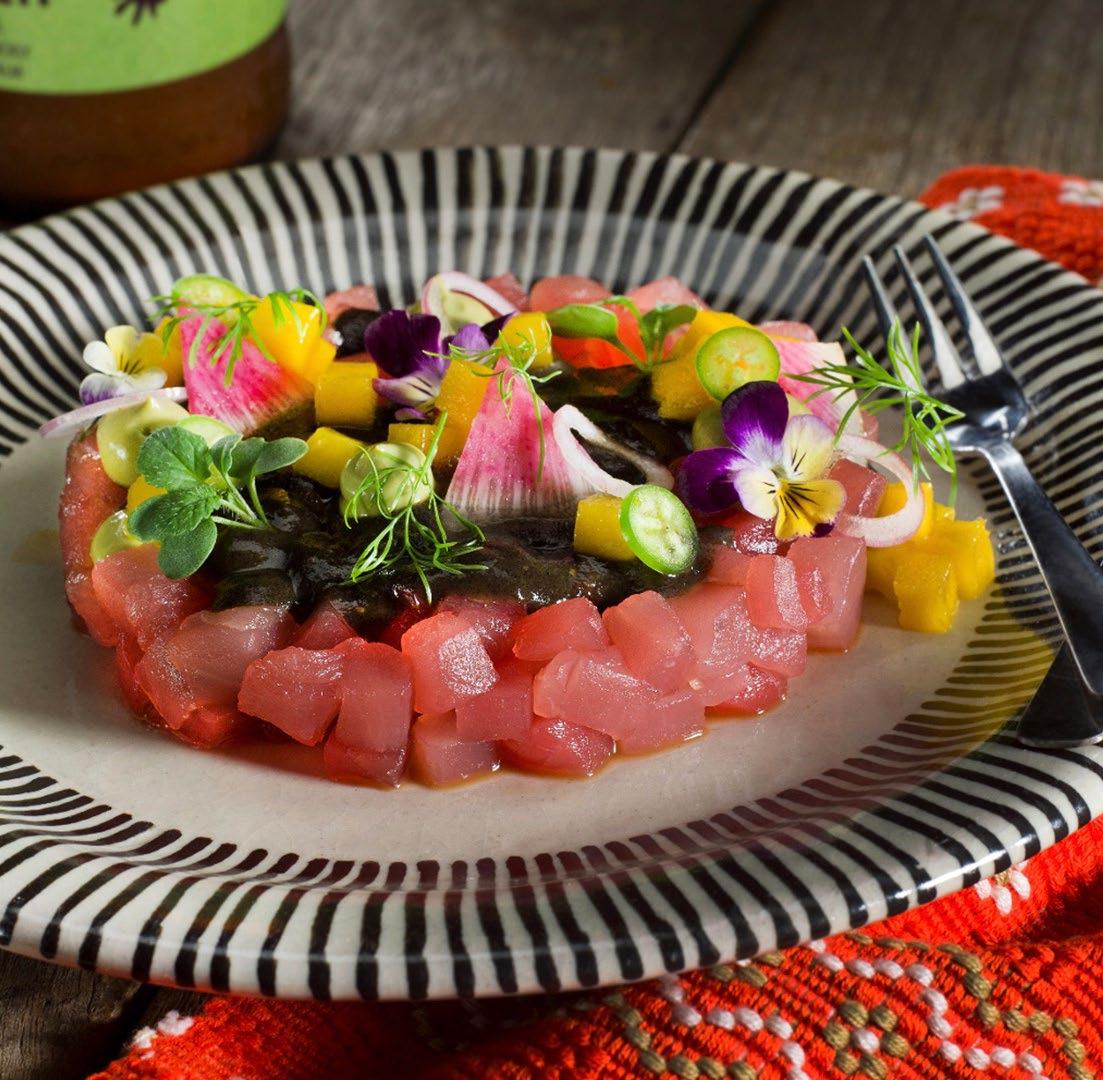
CHEF Blanca Zesati, FONDA SAN MIGUEL , Austin, Texas
Our Ceviche Las Brisas is always a top seller every night. We often serve a vegan version with hearts of palm. We also serve specials with different fish and sauces occasionally, and have Ceviche Negro, a dish inspired by Mexico and South American countries. We went to Merida, Yucatan for training and fell in love with the uniqueness of Recado Negro, which is the base.
[My advice is] just keeping it balanced and not too tart. Add sweetness with tomatoes. Cut the fish in smaller pieces so it marinates well. Frozen fish work well like ahi tuna or mahi mahi.
See Zesati’s recipe for Ceviche Negro on page 47.
AN INTERESTING THEORY ABOUT CEVICHE is that the delicious seafood dish originated with the Moche people of Peru some 2,000 years ago. The Moche used the fermented juice from local banana passionfruit to marinate their raw seafood. The Spaniards, upon arrival, modified the dish slightly. Ceviche then spread to other Latin America nations as local populations added their own take on ceviche recipes. — eatperu.com




| BY ELYSE GLICKMAN | If first impressions are the most important, the kind of mezcals and tequilas on your back bar — and the number of each you choose — will impact how effectively you can entice new cocktail customers while keeping existing ones in your fold.

For Cristhian Rodriguez, beverage director at elNico Rooftop Restaurant and Bar at Penny Hotel in Brooklyn, New York, intention is important — which means thinking ahead to what he wants his back bar to look like and to the story he wants the selection to tell.
There’s a limit to what elNico’s back bar can accommodate (every bar, after all,
“We opened with 100 bo l in May 2023, and now have 259 di ent agave labels behind our bar. This rong selection of bo l helped us create a rong na ative of Mexico.” CRISTHIAN RODRIGUEZ, elNico
has some limit on the number of bottles it can hold) — and while Rodriguez sometimes wishes he had more room, he says the limited space forces him to pick and choose his spirits more carefully.
“We opened with 100 bottles in May 2023, and now have 259 different agave labels behind our bar,” Rodriguez says. “This strong selection of bottles helped us create a strong narrative of Mexico.”
Chef Carlos Gaytán, who developed food and beverage programs for Southern California-based Patina Group’s Céntrico and Tiendita in Anaheim’s Downtown Disney District, suggests looking at product selection from three major angles.
“Is your concept agave-focused? If yes, then having up to 50 percent of your total menu be agave spirits is appropriate. Next, consider whether your clientele is interested in trying multiple different agaves throughout the evening, or just drinking one agave spirit all night,” Gaytán says. “If your clientele drinks a lot of tequila but only one brand, focus on that brand and try to expand them out to other offerings from that brand. If they are open to trying different products, have only one or two things from each brand you work with, and showcase stylistic differences between similar products.”
(continued on page 36)

2 OZ TITO’S HANDMADE VODKA
½ OZ ORANGE LIQUEUR
2 OZ LIME JUICE
¼ OZ AGAVE
Add all ingredients to a shaker with ice.
Shake and strain into a glass with or without fresh ice. Garnish with a lime slice.
Pro-Tip: If you like it salty, use a glass with a salted rim.



“Is your concept agave-focused? If y , then having up to 50 p cent of your total menu be agave spirits is appropriate.”
Like Rodriguez, Gaytán also says shelf space is a major consideration, and stresses that bar managers or buyers should not cram shelves with more bottles than the available space can reasonably and attractively accommodate. Overcluttering, he notes, makes it less likely you’ll sell customers on anything new because nothing will stand out in the sea of bottles crowding the back bar.
“A crowded bar is overly stimulating to the guests, and they will just stick to ordering their go-to’s,” he cautions.
At Descanso Restaurant in Costa Mesa (and opening soon in Los Angeles), owner Rob Arrellano’s approach to curating tequilas and mezcals is guided by several key principles. They include keeping a pulse on industry trends and a having a balance of popular and innovative brands behind the bar to appeal to a wide range of customer tastes and preferences.
“Our foremost aim is to offer diversity, showcasing a spectrum of styles and flavor profiles, ranging from blanco to añejo tequilas and joven to extra añejo mezcals,” says Arrellano. “We source products from distilleries (known) for their craftsmanship and prioritize regional diversity and distinct expressions emerging from various locales across Mexico. We incorporate both popular and innovative brands into our collection.”
Making sure that staff members who will be communicating with customers know enough about the spirits behind the bar to respond to questions about and describe the nuances of each one also is key, Arrellano says.
“Equally important is the ongoing education of our staff, ensuring they are well-versed in the stories and characteristics of each spirit,” he stresses.. “This empowers them to
CHEF CARLOS GAYTÁN, Céntrico and Tiendita
provide guests with knowledgeable recommendations and a truly enriching experience.”
Providing customers with a full picture of Mexican agave and spirits producers is the goal for Riesler Morales, head of mixology at Casa Chi, Chef Richard Sandoval’s new cocktailforward Nikkei lounge in Chicago’s InterContinental Hotel. He’s achieved that goal with Casa Chi’s robust agave-forward tequila and mezcal list, which features more than 142 unique selections available in flights, tastings and mixed cocktails including agaves such as Don Fulano, Pierde Almas, and “some other good emerging product brands.”
His advice?
“Start with a selection of tequilas or mezcals that are easy to drink and are recognized by your clients. After this, learn sub-varietals of agaves and producers and make a small selection of products different from those in your market,” Morales advises. “As representatives of a category like agave, we must think about having a selection of espadin mezcals (including) artisanal and ancestral mezcals.”
Specific brands, he adds, aren’t important as long as everything in a particular category or sub-category of spirit is covered in a way that allows the venue to, in his words, “praise these spirits outside our country.”
Finally, Lorraine Morales, general manager at Rumorosa at the Sheraton San Diego Hotel & Marina, believes a good rule of thumb is to have selections of blanco, reposado, and añejo behind the bar.

“Definitely look for character and great taste, and (focus) on finding flavorful spirits that are great in any set of a drink, whether being served neat or in a cocktail,” Morales says.
Elyse Glickman is a Los Angeles-based writer who writes extensively about bar issues. She is a frequent contributor to el Restaurante
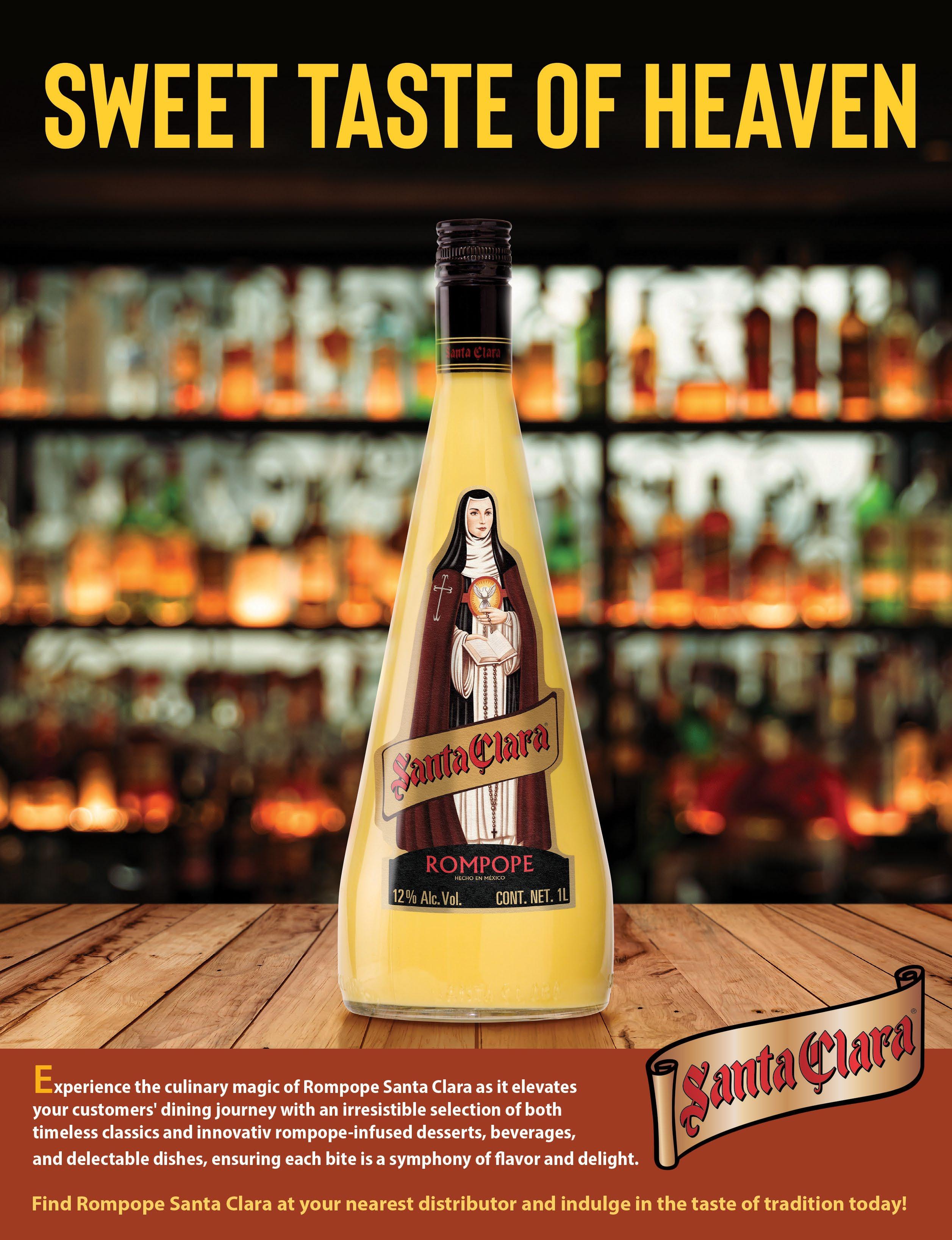


| BY ED AVIS | Pop-up restaurants are a common way for food enthusiasts to get started in the business and for established restaurant owners to experiment with new options. Below are two case studies of pop-ups in the Mexican restaurant space.
Visitors to any location of 3 Margaritas Family Mexican Restaurant in suburban Denver enjoy quality traditional dishes such as Caldo do Pollo, Camarones Mexicanos and Pollo con Crema. As
with most multi-unit restaurants, the menu at all 13 locations of 3 Margaritas is essentially the same.
But Jesus Gutierrez, who owns the location in Broomfield, wanted to introduce customers to a different kind of cuisine — the kind he remembers from his childhood.
Gutierrez is among the second generation of the company’s founders and has happy memories of the food he and his family enjoyed during frequent visits to the beach near Vallarta, Mexico when he was a kid.
“We would go to the beach about six times a year, like for my brother’s birthday or my cousin’s birthday, and our family would go to a little shack where they would cook in front of you,” Gutierrez says. “We would be right there on the beach eating fresh seafood.”
That was the vibe he wanted to share with customers, but it didn’t quite fit with the established menu of 3 Margaritas. So, he did what many Mexican restaurant owners do when they


want to experiment: He opened a pop-up restaurant.
“We already were doing special dinners to be creative and educate our customers about different types of cuisines in Mexico and different types of agave spirits in Mexico, and I wanted to make something permanent — or at least for the whole summer — so we can show our customers something different,” explains Gutierrez, who found the perfect location right behind his current restaurant.
“We had a little alley in the back where all of our orders come in, and we liked the space and thought it was a cool place to try something different,” he says.
He painted the walls surrounding the space and created a look that emulated the beach-side shacks he remembered from his childhood. He installed a small kitchen with enough room to mix ceviches and open oysters and set up several picnic tables.
A door leads from the patio into the main restaurant, so when customers order drinks, they’re made at the regular bar and brought out to the patio. The pop-up also uses the restaurant’s existing POS system.
He named his pop-up Choza, the Spanish word for “hut.”
“It was very low risk, because it’s right behind my restaurant,” he says. “I even use my same staff.”
The one exception is that Gutierrez hired a new chef for the project, Sharif Villa Cruz, who previously worked at Lola Mexican Restaurant in Denver, among other places. Gutierrez had partnered with Villa Cruz before on special tequila dinners at 3 Margaritas.
Villa Cruz developed a menu that reminds Gutierrez of those happy days on the beach in Mexico. Most guests start with oysters, Gutierrez says, and one of the most popular dishes is Aguachile Negro, made with shrimp in a sauce of lime juice, burnt tortilla, garlic and habañeros.
“Ev y cu om who walks in has fa en in love with the f d that we’re doing in the li le pop-up,” Guti rez says. “So you nev know. By the end of the summ , if we love what we’re doing and we i want to k p doing it, we might have to find a sma location somewh e.”
The cocktails also differ from the menu at 3 Margaritas. The best seller so far is Coctel de Tamarindo, which features La Luna mezcal from Michoacan, house-made tamarind pulp, orange liqueur, lime juice and chile de árbol bitters.
Choza opened in early May and will last throughout the summer. Denver gets cold in the winter, and the space is mostly open, so the pop-up is limited to the warmer months. But it’s an experiment, and if things go well, a permanent Choza may emerge.
“Every customer who walks in has fallen in love with the food that we’re doing in the little pop-up,” Gutierrez says. “So you never know. By the end of the summer, if we love what we’re

doing and we still want to keep doing it, we might have to find a small location somewhere.”
The idea for Calaveritas, Maya Peralta’s pop-up in Atlanta, Georgia, started in 2017 when she began sharing her vegan Mexican food with family and friends. By 2019, encouraged by their reaction, she decided to open a vegan Mexican restaurant, but ran into the roadblock so many would-be restaurateurs face: the lack of funds needed to open a brick-and-mortar restaurant.
Happily for Peralta and Atlanta diners, that financial challenge proved a serious but only brief set-back.
“Then I saw the festivals and markets in Atlanta, and realized that was an opportunity for me,” she says. “I researched the requirements to have a pop-up and how much it cost and what
Maya Peralta, the owner of Calaveritas in Atlanta, Georgia, has operated her pop-up for five years. She says that besides the obvious cooking equipment the pop-up needs, some key items that people may not remember include:
• Weights to hold the tent legs in place when the wind blows
• A weather tarp to cover anything that’s not inside the tent in case of rain
• Another tarp for the floor so that dirt doesn’t drift upwards
• A fire extinguisher
• Several small fans to keep cool
• Small plastic boxes to place on the tables for napkins and utensils
• Several large bins to organize all the equipment and carry it around.


kind of equipment I needed. When I had some extra money, I bought a tent, a grill and tables and that’s how I started.”
And Calaveritas was born.
Peralta sold vegan tamales through her new pop-up at three Atlanta-area events in 2019. Inspired by the encouragement she received from customers, she kept at it and moved her pop-up to various events over the next three years.
Peralta says she carefully chose which festivals or markets to set up in. Regarding cost, she says $250 is good. Some large, popular events charge as much as $1,000, but she says it’s very difficult to turn a profit with that large of a fee.
The quality of the organization running the event is another important consideration.
“For example, the Beer Fest is good because it’s very well organized, it’s not so expensive, and they help you with the schedules,” Peralta explains. “They organize the set-up, they give you water, and they have a lot of staff that help you so that everything is in order.”
In 2022 Peralta found stall space at a vegan open-air market, where she stayed two years. Earlier this year, she settled Caleveritas into a permanent indoor space operated by Prep, a culinary business accelerator. Prep provides Peralta with cooking facilities and a to-go window from which to conduct business.
“During the last few years, we’ve been in more than 20 locations,” Peralta says. “Wherever we went, a lot of people followed us.”
“If it’s more of a night event, you need lights, too. And if they don’t provide electricity, you need a small generator,” she says. “Each year we have learned more and more.”
Peralta enjoyed some aspects of running pop-ups, such as the ability to set her schedule and meeting a lot of people. But other things she did not like, such as the amount of work required for certain events -- counting set-up and clean-up, 15-hour days were common.
“Now it feels more like a normal job,” she says. “We don’t have to take things down and move them around. We were very popular at festivals and we were making more money, but we ended up dead at end of the day!”
Ed Avis is the publisher of el Restaurante.
›Haga clic aquí para leer en español

Cocovibe. Our fountain concentrate system lets you offer coconut waterbased drinks made with only two ingredients — organic coconut water and organic fruit. It’s the innovation that enables us to use less packaging, slash carbon emissions, enable reusables and reduce packaging. Request samples at cocovibe.com/ product-details

Purse Pegs. Customers’ bags stay safe with this patented hook system designed to be easily retrofitted onto the pedestal bases of your restaurant’s tables — no drilling needed. Just flip the table over and install 2 to 6 hooks, depending on the diameter of your table base pedestal. 970-376-3349; pursepegsllc.com
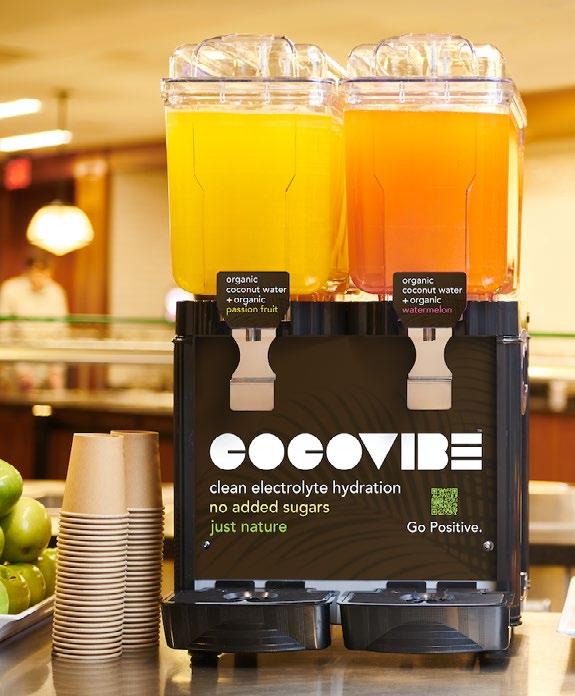
Cheesemakers. Jaimito Mexican Style Cheeses are made from time-tested recipes from Mexico: queso fresco, panela, anejo, quesadilla, cotija, Oaxaca, asadero, enchilada and crema Mexicana. Great for use in tostadas, gorditas, enchiladas, burritos, quesadillas, salads, and more. 281-593-1319; cheesemakers.com

Texican Specialty Products. Keep chips fresh and hot in these tortilla chip serving cabinets from Texican: the “El Primo” 44-gallon capacity chip warmer (shown); the “Chip Master” 22-gallon capacity chip warmer; and the “Pass Thru” custom 44-gallon capacity chip warmer, all with thermostatic temperature control. 713-8969924; sales@texicanspecialty. com; TexicanSpecialty.com

Aguas Frescas de Mexico. Natural fruit concentrates in traditional Mexican aguas frescas flavors: cucumber, horchata, cantaloupe, coconut, watermelon, tamarind, Jamaica, lemon, strawberry, pineapple and mango. Prepare in less than 5 minutes. Dispensing equipment available. 214-664-6380; contact@ aguasfrescasdemexico.com; aguasfrescasdemexico.com
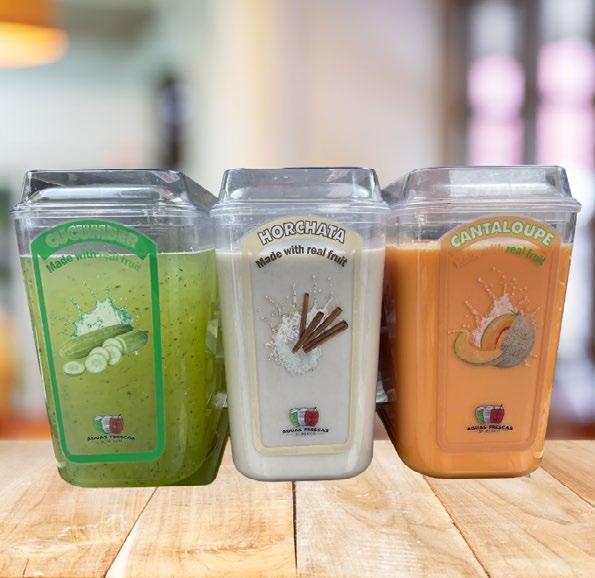
Robot Coupe. The CL 50 Ultra Tex Mex vegetable prep machine package is ideal for Mexican restaurants with its set of discs perfect for slicing ingredients used to make pico de gallo, fajitas, tacos and more. Slicing discs, grating discs, dicing kit, dice cleaning kit, and pack of 2 wall holders included. robot-coupe.com
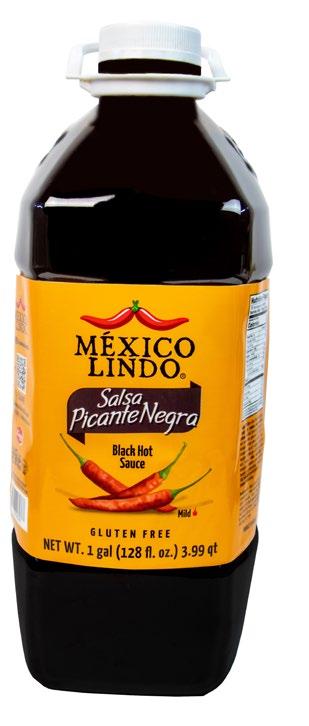

Cordialsa USA Mexico
Lindo Hot Sauces — a sauce for every dish! Choose from several options including Habanero Roja, 7 Mares, and Picante Negra; bottles and foodservice jugs available. cordialsausa.com


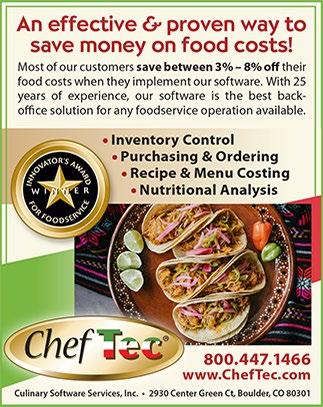


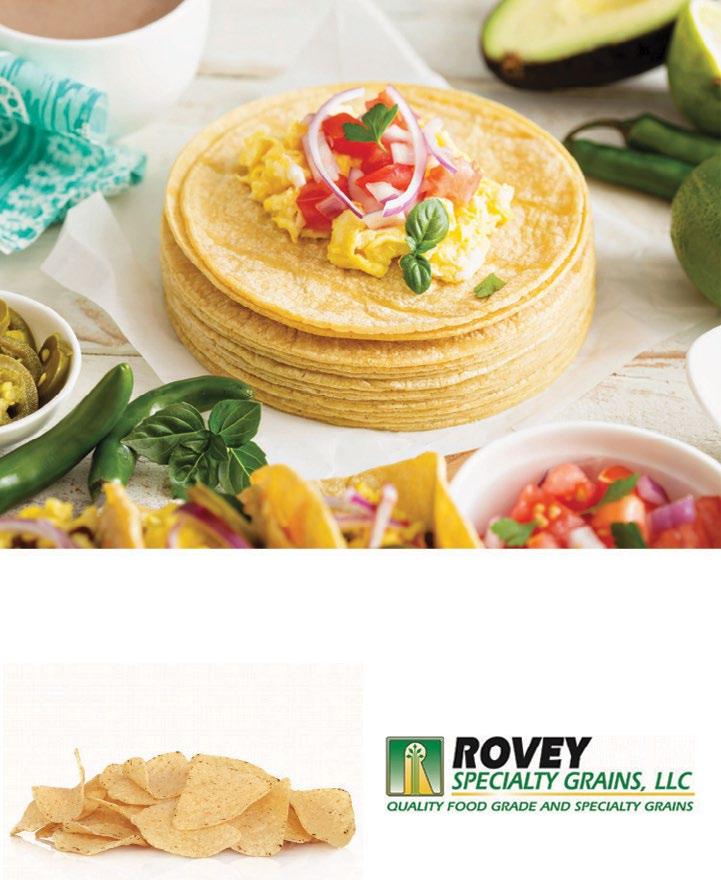




Ceviche Negro
Recipe courtesy of Chef Blanca Zesati, Fonda San Miguel, Austin, Texas
Makes 6 servings
The Ceviche:
1 lb. Ahi tuna, small ½-inch diced
1½ c. Recado Negro (recipe below)
½ c. pineapple, small ½-inch dice, for garnish
1 each sliced serrano, for garnish
¼ each sliced red onion, for garnish
1 bunch chopped cilantro, for garnish
3 each sliced radish, for garnish
Salt to taste
The Recado Negro:
1 each white onion, cut in 4 quarters
4 each Roma tomato
2 each serrano
6 each tomatillos
1 each bulb garlic
1 T. Tabasco
1 t. Worcestershire Sauce
1 t. soy sauce
1 T. Clamato
4 fl. oz. lime juice
2 fl. oz. extra virgin olive oil
This would be best to be made outdoors on your grill over the open flame. Turn on the heat to medium high. You can also make this in an oven on 400°F, checking every 15 minutes.
Once the grill is nice and hot, make the recodo by adding the vegetables to start the charring process.
You can leave the vegetables on the grill while you head back inside to cut the rest of the ingredients of the ceviche and dice the ahi tuna.
Check on the vegetables and turn to ensure the entire vegetable gets nice and charred.
Once the vegetables are nice and charred, transfer them to a blender. Add the Tabasco, Worcestershire Sauce, soy sauce, Clamato, olive oil, and lime juice and blend well.
To Assemble: In a bowl, add the ahi tuna, salt, and recado negro. Mix well and add to your serving bowl.
Garnish the ceviche by spreading the pineapple, red onion, serrano, radishes, and cilantro all over the top. Best served right away.
Amerika’s Ceviche
Recipe courtesy of Chef Armando Gonzales, Amerika, Oak Park, Illinois
3 oz. salmon
3 oz. tuna
½ oz. red onion, sliced
¼ oz. grilled pineapple
1 c. coconut milk
½ habanero pepper, diced
2 T. passion fruit
1 oz. lemon grass
1 t. ginger
2 T. lime juice
Cilantro and edible flowers, for garnish
Combine salmon, tuna, red onion, and grilled pineapple
in a bowl. In a separate bowl, pour in coconut milk.
Add diced habanero pepper, passionfruit, lemon grass, ginger, and lime juice. Stir to combine, then add salmon, tuna, red onion, and pineapple mixture.
Garnish with edible flowers and cilantro. Enjoy with a side of chips or plantain chips for dipping.
Hasta Mañana Cantina’s Traditional Ceviche
Recipe courtesy of Chef Kevin Templeton, Hasta Mañana Cantina, San Diego
The Ceviche:
16 oz. fresh white fish, cut in small cubes
4 fl. oz. fresh lemon juice
4 fl. oz fresh lime juice
Add diced white fish to juice; make sure the fish is fully submerged and not packed too tight.
Soak for at least 8 hours, but no more than 12 hours!
The Cucumber Salsa Fresca:
1 cucumber, peeled, seeded and diced
3 ripe tomatoes, diced
2 jalapeños, diced
½ yellow onion, peeled and diced
1 bunch cilantro, fine chopped
1 t. cumin, ground
1 t. coriander, ground
1 t. kosher salt
½ t. black pepper, ground
1 T. granulated garlic
1 fl. oz. fresh lime juice
Gently mix all ingredients together and combine with your fish! Enjoy!
From our archives:
Carrot Aguachile
Recipe courtesy of Javier Plascencia* Makes 1 serving
1 c. carrot juice
½ ghost pepper
Juice of 1 lemon
Juice of 1 lime
1 T. salt
2 T. green onion
6 Persian cucumbers, sliced
3 T. cashews, roasted and crushed
10 slices red onion, julienne
8 slices carrot, sliced mandoline lengthwise
2 oz. Ahi tuna
2 oz. Media Luna Scallops
½ t. smoked roe
Blend carrot juice and ghost pepper together. Strain. In a medium bowl, mix lemon juice, lime juice and carrot juice mixture.
Add red onions, cucumbers and salt to the bowl. Add Ahi and scallops to the bowl and mix together gently.
Place everything in desired serving dish. Garnish with green onions, cashews, smoked roe and carrot slices.
*When this recipe appeared in el Restaurante, the chef was with the now-closed Bracero Cocina de Raiz in San Diego
A 10th birthday is a milestone for any restaurant to celebrate. It was an especially significant one for Cescas Margarita Bar and Grill — and a poignant one for owner Maybelline Pereda, a dental hygienist by trade who was thrown into the role of restaurateur when her husband died unexpectedly a few months after he’d opened what has become a culinary gem in Chicago’s Andersonville neighborhood in 2014.
The dishes customers enjoy include Enchiladas Verdes, Mole Nachos, and the Costillitas en Salsa Verde, a traditional Mexican dish of slow-cooked baby pork ribs that can be used in tacos or served on the bone as a dinner with rice and beans.
“This is a recipe that my late husband enjoyed very much, and he made it part of our menu. His mother used to make it for him when he was growing up,” Pereda explains. “There are many versions of it — every family makes it the way they love best. Some add potatoes to it, others will add chicharrón to it. It is a dish here at Cescas that no one ever needs to take home because they never leave anything on their plate — it’s that delicious!”
›Haga clic aquí para leer en español
1 rack of baby back pork ribs, cut every 2 ribs
2 bay leaves
½ t. oregano
1 whole garlic
½ onion, sliced
1¾ oz. salt
Water until covered Tomatillo Salsa (recipe below)
Put all ingredients except salsa in a large casserole and boil for approximately 1 ½ hours. Once done, deep fry ribs for approximately 30 to 45 seconds (do not over-fry).
The Tomatillo Salsa
½ t. oregano
½ t. cumin
4 chiles jalapeños “asados,” depending on how spicy they are 10 peeled garlic cloves
3 qts. tomatillos “asados”
2 hefty bouquets of cilantro, plus an
extra ½ bouquet, chopped (keep amounts separated)
Handful of sliced onions
Knorr Suiza Seasoning
Put all ingredients except the ½ bouquet of cilantro, sliced onions and Knorr Suiza in a blender and blend. Then, in a medium container, mix ½ bouquet of chopped cilantro and the blended salsa.
In the same casserole where the ribs boiled, add ½ ladle of oil and a handful of sliced onions. Slightly brown the onions, add the blended salsa and 1 large heaping spoon of Knorr Suiza.
Bring to a boil, add ribs, and simmer approximately 5 minutes. Add salt to taste, if needed. Put over ice to cool down.
Serve on plate covered with salsa and a side of rice and beans, or shred meat and use in tacos.



